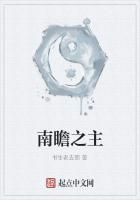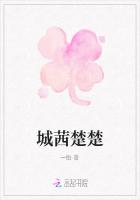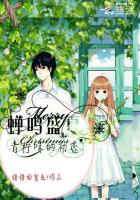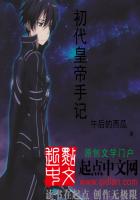The Qianling Mausoleum of Emperor Gaozong of Tang (628–683), as well as the Zhou Dynasty usurper and China’s first (and only) governing empress Wu Zetian is located 100km northwest from the peak of Liangshan Mountain. It is one of the best-preserved of the Eighteen Imperial Tombs and the most representative. A pair of ornamental columns, winged horses, relief humpbacks, and stone horses, ten pairs of civil and military officials stand at the second gate. In addition, a stele with no inscriptions and a stele recording the achievements of the emperor hang between the stone people and the third tower. Sixty-one stone statues of visitors were placed in front of the Zhu Que Men. These stone carvings enlarge the space of the mausoleum and reflect the dignity and supreme position of the emperors.
Prominent among the stone carvings of Qianling Mausoleum are a pair of winged horses at the front. The winged horse or Pegasus is an auspicious animal. The sculpture of winged horse, realistic in style, has highly decorative patterns. The curled patterns on the wings have the similar features of “Tangcao,” a decorative pattern in the Tang Dynasty sculpture.
Tangcao
Tangcao, the vine grass, is endowed with the lucky morals of continuity and perennity. With beautiful cur ves, it has undergone various changes with the passing of time and was widely applied to all kinds of decoration, forming a special category in the decorative patterns. The pattern, the typical decoration pattern in the Tang Dynasty, was very popular in the Sui and Tang dynasties, hence the name “Tangcao.”
The postures and expressions of a large number of civil and military officials are the same, which seem a bit stiff from the individual point of view, but on the whole give people the impression of standing out majestically. A statue of an ostrich first appeared in the tomb of a Tang Dynasty emperor. In order to make it is easier to carve the neck and legs, craftsman used the relief technique and realistic approach. The ostrich lives in the tropics and was considered a rare bird during the Tang Dynasty. Its image is similar to the image Zhuque used in the Han Dynasty.
Pottery figures in the Tang Dynasty tombs
The custom of burying objects was prevalent during the Tang Dynasty, so unearthed pottery sculptures are very rich and usually found in Xi’an and Luoyang. Most of the tombs of nobles of the Tang are in these two places. In Shaanxi Province, more than 3,000 pottery sculptures have been excavated. More than 570 pieces of pottery men were found in the tomb of Princess Yongtai; more than 1,000 in the tomb of Prince Yide; about 600 in the tomb of Crown Prince Zhanghuai. The tricolor figurines are the most unique and commonly seen sculptures. Tricolor pottery is the most important burial sculpture from the Tang Dynasty.
Grouped by category, pottery sculptures of the Tang Dynasty include female sculptures, male sculptures, musician and dancer sculptures, gods and spirits, and horse sculptures as well as other sculptures of common domestic animals, etc.
Female sculptures: Female sculptures from the Tang Dynasty can be divided into three categories. The first is the typical Tang style, i.e. most of women were plump, matching the aesthetic requirements of the Tang. A second female image has a round face but not a plump figure. The third kind is slim and pretty. The difference of female images results from the different status and position of the people, times and regions. Female sculpture shows different styles in the Tang Dynasty’s early, middle and late period and Northern and Southern regions. The fat sculptures are noble women dressed in the style of the middle period. They can be usually found in Xi’an; while slim female sculptures show the elegant demeanor of southern China or appear in the early Tang, still affected by the dress and social style of the Wei and Jin dynasties.
Male sculptures: Male sculptures from Tang Dynasty tombs include warriors, flags, weapons, horses as well as attendants. The commonly seen attendants are Kunlun slaves and figurines of Hu people. Tang nobles employed a large number of people from ethnic nations and west Asian people as their vassals, so such kind of male sculptures are commonly seen in the tombs of the nobles of the Tang Dynasty. Musicians and dancers: The sculptures of musicians and dancers are also important pottery pieces. They were made in the hopes of putting on a false show of peace and prosperity for decedents. Ancient China had many kinds of music and dance. The dancers postures were different as were the backgrounds. Therefore, sculptures of musicians and dancers found in the tombs are various and very vivid.
Monsters: Monster sculptures that can ward off ill luck, evil and protect the dead were usually known as tomb-guarding beasts. These type of beasts appeared as early as the Warring States Period. During the Northern Dynasty, sculptures of animals with a human head appeared. These tomb figures were more popular during the Sui and Tang dynasties, when various changes occurred. The tomb-guarding beasts during the Tang Dynasty made the biggest contribution to the development of images of animals with human heads from the Northern Wei Dynasty. They also developed evil half-human, half-animal images recognized as the evolution of the ancient Fangxiang God, meaning demons and monsters that can drive out evil spirits. People carved images of monsters that squat in the tomb. The tomb-guarding beasts always appeared in pairs. An overall view of the stone carvings in tombs from the Wei, Jin to the Tang dynasties tells us that whether the large stone animal and human figures, the maids, sculptures of musicians and dancers, even the monsters protecting the tomb are vigorous, matching the atmosphere at that date. The dead’s life after death is also vigorous. Sculptural art from the Tang shows the tolerance and moderation of the culture. It is the abstract and brief chronicle of the time.
The shape and structure of tombs from the Tang Dynasty changed during the Song Dynasty, which incorporated more common customs but lacked the beauty of power and vigor of the Tang. Stone carvings and pottery sculptures were rarely seen during the Yuan Dynasty. The Ming and Qing dynasties, despite continued to build tombs, did not achieve more glorious results than the middle Tang period.















